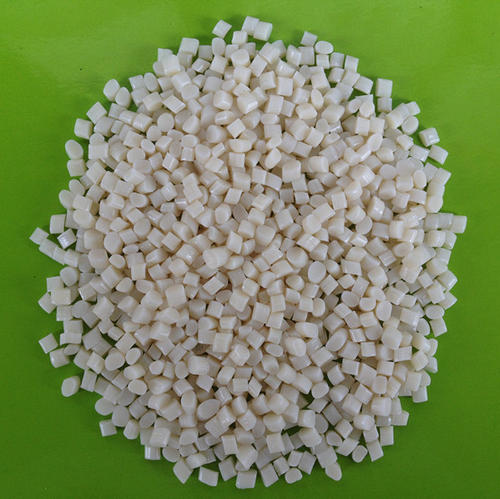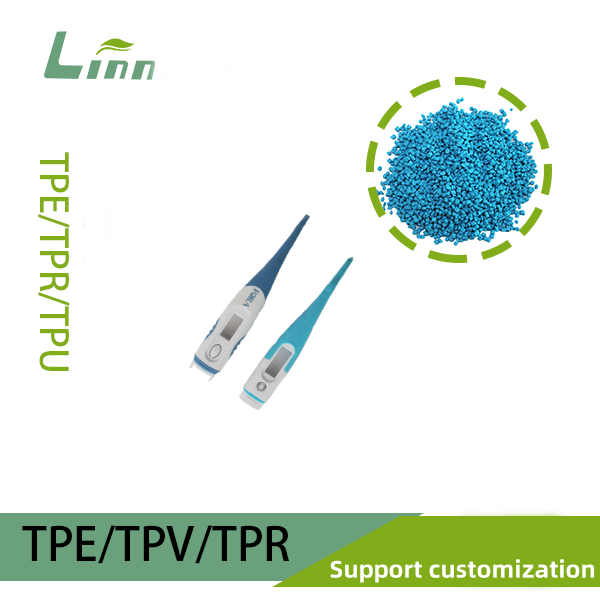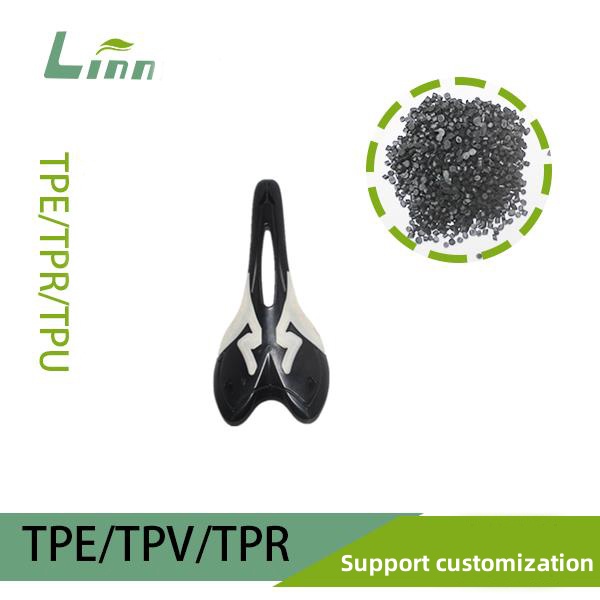In the field of polymer materials, TPE (thermoplastic elastomer) compounds occupy an important market position due to their unique properties, which perfectly combine the flexibility of rubber with the easy processing of thermoplastics. I have encountered countless questions about TPE compounds, and one of the most frequently asked questions is their shelf life. Today, I would like to explore this topic in depth and share my insights based on my practical experience and knowledge.

Understanding TPE Compounds and Their Characteristics
Before we discuss the shelf life of TPE compounds, it’s essential to have a good grasp of what they are and what makes them special. TPE compounds are a class of copolymers or a physical mix of polymers (usually a plastic and a rubber) that exhibit elastomeric behavior at room temperature while being processable like thermoplastics at elevated temperatures. This dual nature gives TPE compounds a wide range of applications, from automotive parts and consumer goods to medical devices and toys.
One of the key advantages of TPE compounds is their ability to be recycled and reprocessed multiple times without significant degradation of their properties. However, like all materials, TPE compounds are not immune to changes over time, and their shelf life is an important consideration for manufacturers, distributors, and end-users alike.
Factors Influencing the Shelf Life of TPE Compounds
The shelf life of TPE compounds can vary widely depending on several factors. Understanding these factors is crucial for determining how long a particular batch of TPE compound can be stored before it starts to show signs of degradation. Here are some of the key factors that influence the shelf life of TPE compounds:
1. Composition of the TPE Compound
The specific formulation of the TPE compound plays a significant role in its shelf life. Different types of TPE, such as styrenic block copolymers (SBCs), thermoplastic polyolefins (TPOs), thermoplastic vulcanizates (TPVs), and thermoplastic polyurethanes (TPUs), have varying chemical structures and properties that can affect their stability over time. Additionally, the presence of additives like antioxidants, UV stabilizers, and plasticizers can also impact the shelf life. For example, antioxidants are added to prevent oxidation, which can lead to degradation of the polymer chains and a reduction in the material’s performance. If the antioxidant package is not sufficient or if it gets depleted over time, the TPE compound may start to degrade more quickly.

2. Storage Conditions
The way TPE compounds are stored has a profound impact on their shelf life. Temperature, humidity, and exposure to light are the three most critical factors to consider.
Temperature: TPE compounds should be stored in a cool, dry place. High temperatures can accelerate the degradation process by increasing the rate of chemical reactions, including oxidation and hydrolysis. As a general rule, TPE compounds should be stored at temperatures below 30°C (86°F). Some TPE compounds may have more specific temperature requirements, so it’s always best to check the manufacturer’s recommendations.
Humidity: Moisture can also have a detrimental effect on TPE compounds. It can cause hydrolysis of the polymer chains, leading to a reduction in molecular weight and a loss of mechanical properties. TPE compounds should be stored in a low-humidity environment, ideally with a relative humidity of less than 60%. If the TPE compound comes in a moisture-sensitive packaging, it’s important to keep it sealed until it’s ready for use.
Exposure to Light: Ultraviolet (UV) light can cause photo-oxidation of TPE compounds, leading to discoloration, embrittlement, and a loss of physical properties. TPE compounds should be stored away from direct sunlight and other sources of UV radiation. If the TPE compound is going to be used in an outdoor application, it’s important to choose a grade that has been formulated with UV stabilizers to enhance its resistance to light-induced degradation.
3. Packaging
The packaging of TPE compounds is another important factor that can affect their shelf life. Proper packaging can help to protect the TPE compound from exposure to moisture, oxygen, and light, thereby extending its shelf life. Common packaging materials for TPE compounds include polyethylene bags, drums, and boxes. Some TPE compounds may also be vacuum-packed or filled with an inert gas like nitrogen to further reduce the amount of oxygen in the package and slow down the oxidation process.

4. Processing History
The processing history of TPE compounds can also have an impact on their shelf life. If the TPE compound has been subjected to high temperatures or shear forces during processing, it may have undergone some degree of degradation, which could affect its stability over time. Additionally, if the TPE compound has been stored in a contaminated environment or has come into contact with other materials that could cause chemical reactions, its shelf life may be shortened.
General Guidelines for the Shelf Life of TPE Compounds
While the shelf life of TPE compounds can vary depending on the factors mentioned above, there are some general guidelines that can be used as a starting point. However, it’s important to note that these are just estimates, and the actual shelf life of a particular batch of TPE compound may be longer or shorter depending on its specific formulation and storage conditions.
1. Unopened, Properly Stored TPE Compounds
For unopened, properly stored TPE compounds, the shelf life can range from 6 months to 2 years or more. TPE compounds that are formulated with high-quality antioxidants and UV stabilizers and are stored in a cool, dry, and dark place are likely to have a longer shelf life. On the other hand, TPE compounds that are more sensitive to oxidation or hydrolysis or that are stored in less-than-ideal conditions may have a shorter shelf life.
2. Opened TPE Compounds
Once a package of TPE compound has been opened, its shelf life is generally shorter. Exposure to air, moisture, and contaminants can accelerate the degradation process. As a rough estimate, opened TPE compounds that are resealed properly and stored in a cool, dry place may have a shelf life of 3 to 6 months. However, it’s important to regularly inspect the TPE compound for signs of degradation, such as changes in color, texture, or odor, and to use it as soon as possible to ensure optimal performance.

Table: Estimated Shelf Life of Different Types of TPE Compounds
| Type of TPE Compound | Unopened, Properly Stored Shelf Life | Opened, Resealed, and Properly Stored Shelf Life |
|---|---|---|
| Styrenic Block Copolymers (SBCs) | 1 – 2 years | 3 – 6 months |
| Thermoplastic Polyolefins (TPOs) | 6 months – 1.5 years | 2 – 4 months |
| Thermoplastic Vulcanizates (TPVs) | 1 – 2 years | 3 – 6 months |
| Thermoplastic Polyurethanes (TPUs) | 6 months – 1 year | 2 – 3 months |
It’s important to note that these are just general estimates, and the actual shelf life of a specific TPE compound may vary. Always refer to the manufacturer’s recommendations for the most accurate information.
Signs of TPE Compound Degradation
Even if you store TPE compounds properly, they may still start to degrade over time. It’s important to be able to recognize the signs of degradation so that you can take appropriate action, such as using the TPE compound before it loses its performance or disposing of it if it’s no longer suitable for use. Here are some common signs of TPE compound degradation:
1. Changes in Color
One of the most obvious signs of TPE compound degradation is a change in color. TPE compounds that have been exposed to heat, light, or oxygen may start to yellow or darken over time. This discoloration is often an indication of oxidation or other chemical reactions that are occurring within the material.
2. Changes in Texture
Degraded TPE compounds may also show changes in texture. They may become sticky, brittle, or develop a rough surface. These changes in texture can affect the processability and performance of the TPE compound, making it difficult to mold or extrude into the desired shape.

3. Loss of Mechanical Properties
Another sign of TPE compound degradation is a loss of mechanical properties. The material may become less flexible, have reduced tensile strength, or exhibit poor elongation at break. These changes in mechanical properties can compromise the performance of the final product, leading to premature failure or reduced service life.
4. Odor
In some cases, degraded TPE compounds may emit an unpleasant odor. This odor is often a result of the breakdown of chemical components within the material and can be an indication that the TPE compound is no longer suitable for use.
How to Extend the Shelf Life of TPE Compounds
While the shelf life of TPE compounds is influenced by various factors, there are steps you can take to extend their shelf life and ensure that they remain in good condition for as long as possible. Here are some tips:
1. Follow the Manufacturer’s Storage Recommendations
The most important thing you can do to extend the shelf life of TPE compounds is to follow the manufacturer’s storage recommendations. This includes storing the TPE compound in a cool, dry, and dark place, away from sources of heat, moisture, and light. The manufacturer’s recommendations are based on extensive testing and knowledge of the specific TPE compound, so they are the best guide for ensuring optimal storage conditions.
2. Use Proper Packaging
If you’re storing TPE compounds for an extended period, consider using proper packaging to protect them from the environment. This may include using moisture-barrier bags, drums, or containers, and sealing them tightly to prevent the ingress of air and moisture. Additionally, if the TPE compound is sensitive to light, you may want to store it in opaque packaging or in a dark area.

3. Implement a First-In, First-Out (FIFO) Inventory System
To ensure that you’re using the oldest TPE compounds first and minimizing the amount of material that sits in storage for an extended period, implement a first-in, first-out (FIFO) inventory system. This involves labeling the TPE compounds with their date of receipt or production and using them in the order in which they were received. By doing so, you can reduce the risk of having TPE compounds that have exceeded their shelf life.
4. Regularly Inspect and Test the TPE Compounds
Even if you’re storing TPE compounds properly, it’s a good idea to regularly inspect and test them for signs of degradation. This may involve visually inspecting the material for changes in color or texture, performing simple mechanical tests to check its properties, or conducting more advanced analytical tests if necessary. By detecting degradation early, you can take appropriate action, such as using the TPE compound before it loses its performance or disposing of it if it’s no longer suitable for use.
Real-World Examples and Case Studies
To better understand the shelf life of TPE compounds and the factors that can influence it, let’s look at some real-world examples and case studies.
Case Study 1: Automotive Parts Manufacturer
An automotive parts manufacturer was experiencing issues with the quality of TPE compounds they were using to produce seals and gaskets. After some investigation, they discovered that the TPE compounds were being stored in a warehouse that was not temperature-controlled, and the temperatures often exceeded 30°C (86°F) during the summer months. As a result, the TPE compounds were degrading more quickly than expected, leading to problems with processability and the performance of the final parts. The manufacturer implemented a new storage system, moving the TPE compounds to a temperature-controlled warehouse and following the manufacturer’s storage recommendations more closely. As a result, they were able to extend the shelf life of the TPE compounds and improve the quality of their products.

Case Study 2: Medical Device Company
A medical device company was developing a new product that required the use of a specific grade of TPU compound. The company was concerned about the shelf life of the TPU compound, as they needed to ensure that it would remain stable and perform as expected throughout the product’s lifecycle. They worked closely with the TPU compound supplier to understand the factors that could influence its shelf life and implemented a comprehensive storage and handling plan. This included storing the TPU compound in a cool, dry, and dark place, using proper packaging, and regularly inspecting and testing the material for signs of degradation. As a result, the company was able to successfully use the TPU compound in their medical device and meet the required quality and performance standards.
Case Study 3: Toy Manufacturer
A toy manufacturer was using TPE compounds to produce soft, flexible toys for children. However, they were receiving complaints from customers about the toys becoming sticky and discolored over time. After investigating, they found that the TPE compounds were being stored in a warehouse that was exposed to direct sunlight, which was causing photo-oxidation of the material. The manufacturer changed the storage location to a dark area and added UV stabilizers to the TPE compound formulation. As a result, they were able to improve the shelf life of the TPE compounds and the quality of their toys, reducing customer complaints and increasing customer satisfaction.
Conclusion
In conclusion, the shelf life of TPE compounds can vary widely depending on factors such as their composition, storage conditions, packaging, and processing history. While there are general guidelines for the shelf life of different types of TPE compounds, it’s important to remember that these are just estimates, and the actual shelf life of a particular batch of TPE compound may be longer or shorter depending on its specific circumstances.
By understanding the factors that influence the shelf life of TPE compounds and implementing proper storage, handling, and testing procedures, you can extend their shelf life and ensure that they remain in good condition for as long as possible. This, in turn, can help to improve the quality and performance of the products you manufacture, reduce waste, and increase customer satisfaction.
Whether you’re a manufacturer, a distributor, or an end-user of TPE compounds, taking the time to understand and manage their shelf life is an important part of ensuring the success of your business. By following the tips and guidelines outlined in this article, you can make informed decisions about the storage and use of TPE compounds and avoid the problems associated with degraded materials.

Related Questions and Answers
Q1: Can I still use TPE compounds that have exceeded their estimated shelf life?
A1: It’s generally not recommended to use TPE compounds that have exceeded their estimated shelf life, especially if they show signs of degradation, such as changes in color, texture, or mechanical properties. Using degraded TPE compounds can lead to problems with processability and the performance of the final product, potentially resulting in premature failure or reduced service life. However, if the TPE compound appears to be in good condition and passes relevant testing, it may be possible to use it in non-critical applications. It’s always best to consult with the manufacturer or a materials expert before using TPE compounds that have exceeded their shelf life.
Q2: How can I test TPE compounds for degradation?
A2: There are several tests that can be used to assess the degradation of TPE compounds. Some common tests include:
Visual Inspection: Look for changes in color, texture, or the presence of contaminants.
Mechanical Testing: Perform tests such as tensile strength, elongation at break, and hardness measurements to check for changes in mechanical properties.
Thermal Analysis: Use techniques like differential scanning calorimetry (DSC) or thermogravimetric analysis (TGA) to study the thermal behavior of the TPE compound and detect any changes in its composition.
Chemical Analysis: Conduct tests such as Fourier-transform infrared spectroscopy (FTIR) to identify any chemical changes or the presence of degradation products.
The specific tests you choose will depend on the type of TPE compound, the application, and the level of accuracy required. It’s often best to work with a laboratory or a materials expert to determine the most appropriate testing methods.

Q3: Can I extend the shelf life of TPE compounds by adding more antioxidants?
A3: While adding more antioxidants to TPE compounds may help to slow down the oxidation process to some extent, it’s not a guaranteed way to extend their shelf life indefinitely. The effectiveness of antioxidants depends on various factors, such as their type, concentration, and the specific TPE compound formulation. Additionally, adding too many antioxidants can have negative effects on the material’s properties, such as reducing its flexibility or increasing its viscosity. It’s important to follow the manufacturer’s recommendations for antioxidant levels and to consider other factors, such as storage conditions, when trying to extend the shelf life of TPE compounds.
Q4: What should I do if I find degraded TPE compounds in my inventory?
A4: If you find degraded TPE compounds in your inventory, the first step is to assess the extent of the degradation and determine whether the material can still be used. If the degradation is minor and the TPE compound passes relevant testing, you may be able to use it in non-critical applications. However, if the degradation is significant and the TPE compound no longer meets the required specifications, it should be disposed of properly. It’s important to have a clear inventory management system in place to regularly inspect and test TPE compounds and to take appropriate action when degradation is detected.
Q5: Are there any environmental factors that can affect the shelf life of TPE compounds during transportation?
A5: Yes, environmental factors during transportation can also affect the shelf life of TPE compounds. Exposure to high temperatures, humidity, and sunlight during transit can accelerate the degradation process. To minimize the impact of transportation on the shelf life of TPE compounds, it’s important to use proper packaging, such as insulated containers or moisture-barrier bags, and to choose a reliable transportation provider that can ensure the TPE compounds are stored and handled properly during transit. Additionally, it’s a good idea to communicate any specific storage requirements to the transportation provider to ensure they are aware of and can comply with them.





